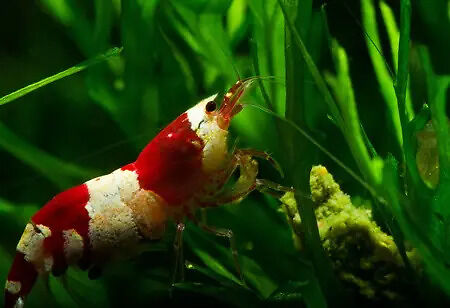
Will Punjab Fish a Big Catch in its Shrimp Farming Endeavor?


Global soil salinization is a problem that has reduced agricultural productivity in more than 100 nations. Many farmers have lost their livelihoods due to such damaged fields, which are no longer viable for any productive agricultural activity, putting them in debt despite owning sizable landholdings. Human activities have made soil salinization worse, which has caused secondary salinization of places where the groundwater is already salty. In some places, major water logging issues are a result of improper drainage systems and extensive irrigation techniques using canal water.
The states with the highest salt levels include Haryana, Punjab, Rajasthan, and Uttar Pradesh. Water logging and secondary salinization are issues caused by these locations' non-use of saline waters.
By pumping groundwater out, it is possible to lower the water table to more secure levels (below the root zone), making these places viable for agriculture. Sadly, pumping out groundwater is a difficult job that can only be done by evapotranspiration, which is a very expensive method that is beyond the financial means of the farming community with little resources. Yet, with aquaculture, these unproductive, zero-earning fields can be turned into economically viable lands. In addition to providing a source of income for the afflicted farmers, aquaculture can aid in the evapotranspiration of a significant amount of water from these locations.
Punjab has salinated underground water that is unsuitable for agriculture, particularly in the south-west. Moreover, waterlogging is a recurring problem in this region. To help farmers whose land was being wasted, shrimp farming was suggested.
First Ever State Level Shrimp Fair
The first state-level shrimp mela (shrimp fair) for Punjab is scheduled to start on Friday in the village of Enakhera in the Muktsar district.
Although shrimp aquaculture started in the state in 2016–17, the mela is an effort by the state government to raise awareness of it. In the five south-western districts of Punjab—Muktsar, Fazilka, Ferozepur, Bathinda, and Faridkot—it is practiced.
On a one-acre parcel in the village of Ratta Khera in the Muktsar district, farming started in 2016–17. Senior fisheries officer Kokam Kaur of Muktsar and Ferozepur claims that the experiment was successful since four tonnes of shrimp were produced in a one-acre fish pond. The Center and the state government both contributed funding to the initiative. A total of 1,212 acres of land in south-west Punjab are used for shrimp farming as of 2022–2023; 2,413 tonnes of shrimp are produced there.
Hesitancy to Utilize Sources
According to the administration, the state's shrimp farming industry is doing well. In contrast, a group of farmers recently met with Chief Minister Bhagwant Mann at the first sarkar-kisan milni (government-farmer meeting) held at Punjab Agricultural University, Ludhiana, and complained that more than 6000 acres of saline-water area that could be used for shrimp farming were lying idle as farmers were unwilling to get into it.
The reason for this is that these fish farms' energy connections are considered as commercial rather than agricultural connections, which results in high electricity costs. The farmers urged that the government turn these into connections for agriculture or at the very least offer discounted electricity.
Encourage More People into Shrimp Farming
The purpose of this mela is to increase participation in fish farming by educating farmers about the many programs that are available. Successful farmers will share their experiences at the event, which will be place at the farmers' training center in Enakhera Village. Experts will also assist farmers in understanding aquaculture.
The Pradhan Mantri Matsya Sampada Yojana (PMMSY), which began in 2021 and will last through 2025, is currently running a number of programs to support the so-called blue revolution.
Under this scheme, a fish pond on 2.5 acres of land will cost Rs 14 lakh, of which farmers in the general category will receive 40 percent in subsidies and those from SC/ST communities will receive 60 percent. Also, women and female-run cooperative societies receive a 60 percent subsidy.
For buying and establishing cold storage/ice plants, for purchasing refrigerated vehicles to market shrimp, and for purchasing motorbikes or bicycles with an ice box, the same amount of subsidy is offered. The government has listed the price of these products on the PMMSY website, and the subsidy is given based on that. The subsidy might be used to establish a fish feed mill or even a fish value-added enterprise unit.
Farmers in Punjab state that they currently market their goods independently. Dealers from Kerala or other southern states travel directly to fish farms to pick up the catch. Shrimp farmer Harpinder Kaur of Koliannwali village said, "Our tie-up is with Kerala wholesalers directly.
Several farmers deliver their goods to hotels in Delhi. Yet, many believe that the Punjabi hospitality sector should help them so that more farmers can enter this line of work.
According to the farmers, the water in this area is so salty that 10–12 aerators, as opposed to the typical requirement of seven to eight, are needed in a one-hectare area to continuously supply shrimps with oxygen.
Several farmers' electricity connections have already been cut off as a result of overloading and unpaid bills. The fisheries department asserts that they are educating farmers about this industry and has plans to add 5,000 more acres to shrimp cultivation over the following five years. Farmers acknowledge that it is a successful endeavor as long as the government can work out a few kinks.
The two main issues impacting shrimp production, quality, and marketing and export are seed quality and disease outbreak. Also, the lack of a feed and processing business in the area raises production costs and complicates the procurement process. At the moment, the State's shrimp producers are entirely dependent on the coastal states for seed, feed, and marketing assistance (processing and export).